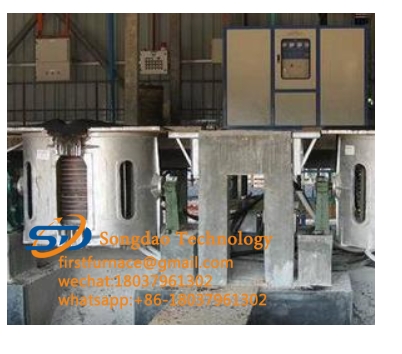- 07
- Oct
Comparative analysis of induction melting furnace and power frequency furnace
Comparative analysis of induction melting furnace and power frequency furnace
Lafaoro fanalefahana induction is a special smelting equipment suitable for smelting high-quality steel and alloys. Compared with industrial frequency furnaces, it has the following advantages:

1) Fast melting speed and high production efficiency. The power density of the induction melting furnace is large, and the power configuration per ton of molten steel is about 20-30% larger than that of the industrial frequency furnace. Therefore, under the same conditions, the melting speed of the induction melting furnace is fast and the production efficiency is high.
2) Strong adaptability and flexible use. In the induction melting furnace, each furnace of molten steel can be completely cleaned, and it is convenient to change the steel grade; while each furnace of the industrial frequency furnace is not allowed to be cleaned, and a part of the molten steel must be reserved for the start of the furnace. Therefore, it is inconvenient to change the steel grade. Smelt a single variety of steel.
3) The electromagnetic stirring effect is better. Since the electromagnetic force borne by molten steel is inversely proportional to the square root of the power supply frequency, the stirring force of the intermediate frequency power supply is smaller than that of the industrial frequency power supply. For removing impurities, uniform chemical composition and uniform temperature in steel, the stirring effect of the intermediate frequency power supply is better. The excessive stirring force of the power frequency power supply increases the scouring force of the molten steel on the furnace lining, which not only reduces the refining effect but also reduces the life of the crucible.
4) Easy starting operation. Since the skin effect of the intermediate frequency current is much greater than the power frequency current flow, the induction melting furnace has no special requirements for the charge when it is started, and it can be heated up quickly after charging; while the power frequency furnace requires a specially made opening block (Similar to the crucible size, about half the height of the crucible cast steel or cast iron block) can start heating, and the heating rate is very slow. In view of this, induction melting furnaces are mostly used under cyclical operating conditions. Another advantage brought about by easy starting is that it can save electricity during periodic operations.
Due to the above advantages, in recent years, induction melting furnaces have not only been widely used in the production of steel and alloys, but also have been rapidly developed in the production of cast iron, especially in the casting workshops with periodic operations.
